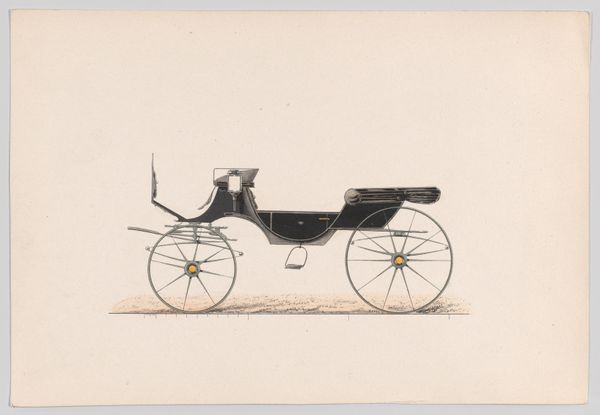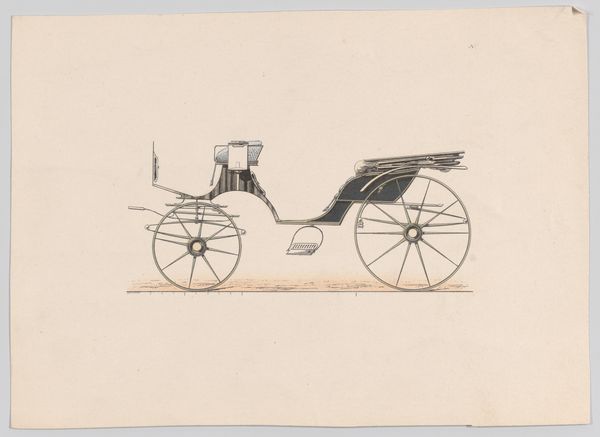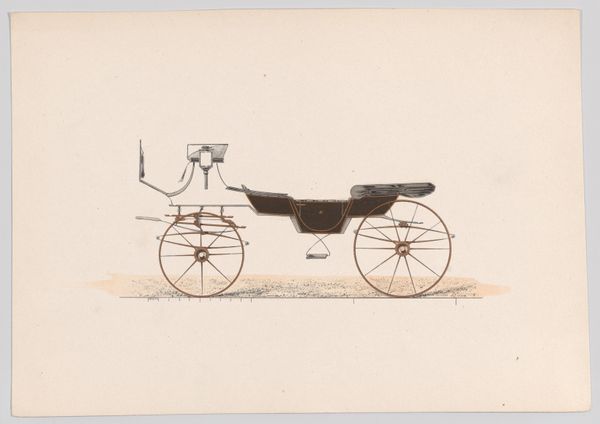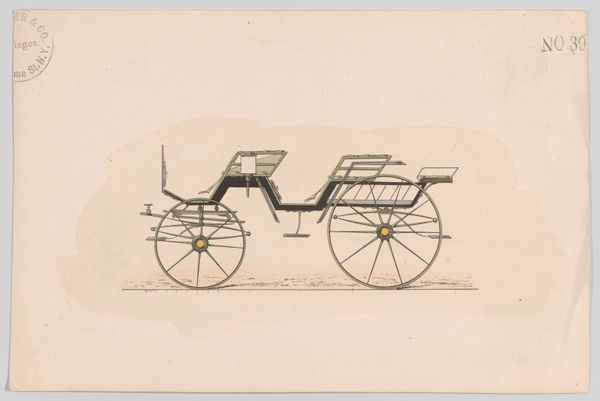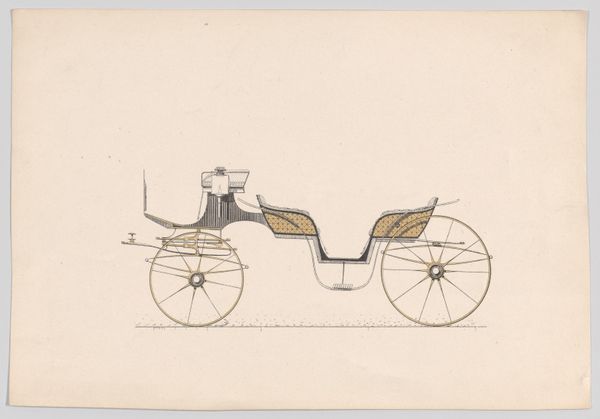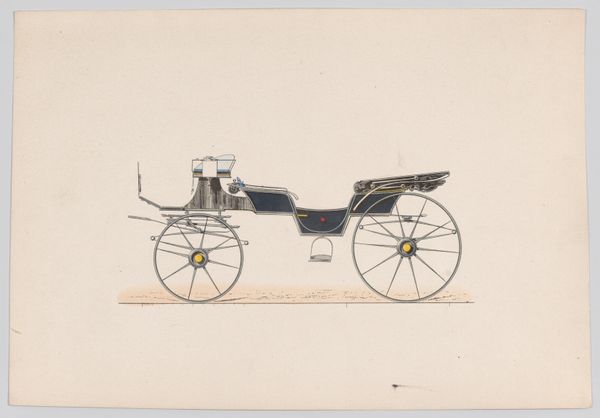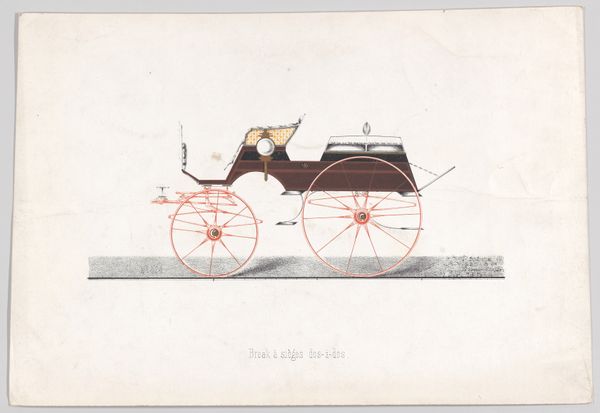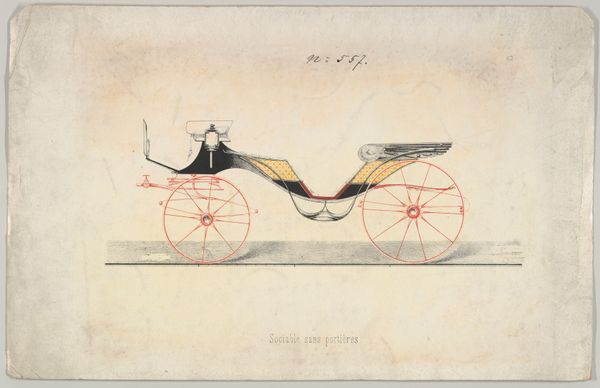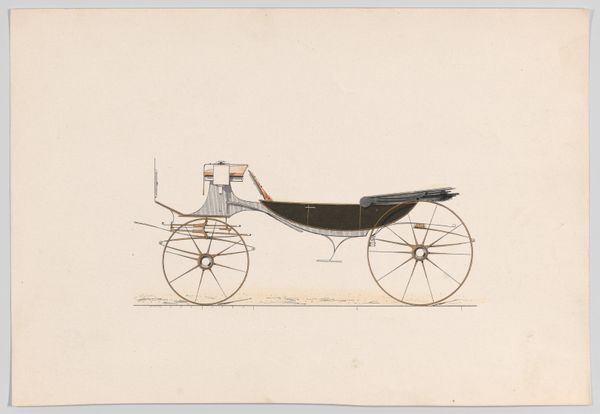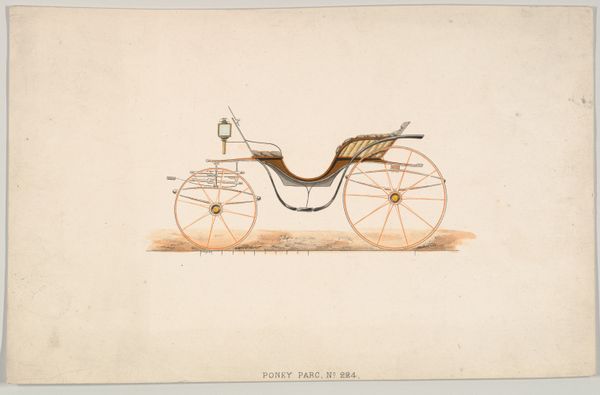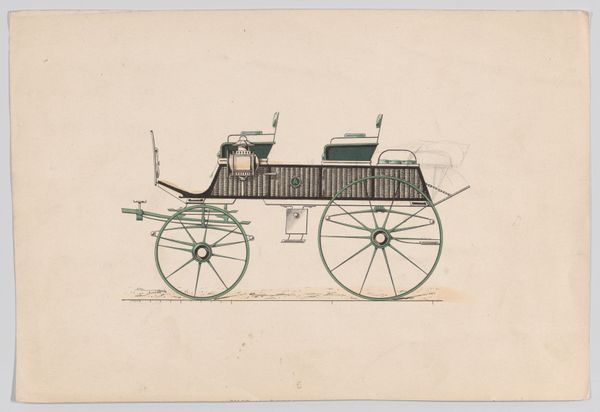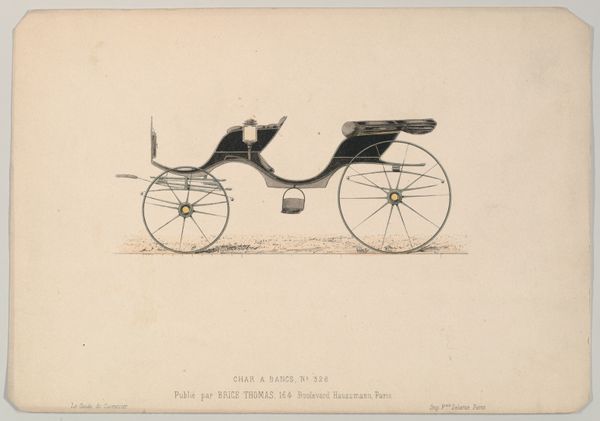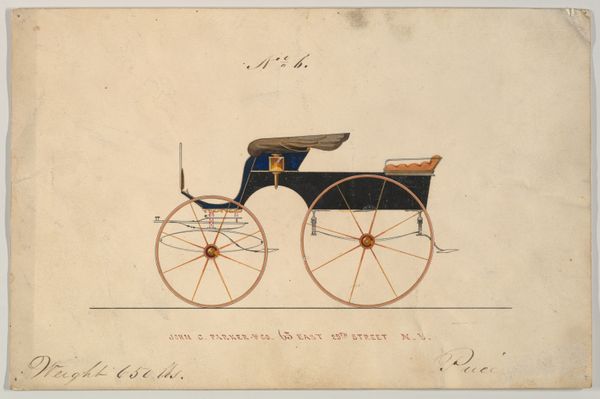
drawing, coloured-pencil, print, watercolor
#
drawing
#
coloured-pencil
#
water colours
# print
#
watercolor
#
coloured pencil
#
history-painting
#
academic-art
Dimensions: sheet: 6 1/8 x 8 7/8 in. (15.6 x 22.5 cm)
Copyright: Public Domain
Curator: Look at this "Design for Cabriolet Carriage" which historians estimate was sketched between 1865 and 1875. It’s an anonymous piece that lives here at the Met. The artist rendered it using a combination of drawing, coloured pencil, watercolor and, intriguingly, printmaking. What are your first thoughts? Editor: Elegant austerity. It's… surprisingly simple, isn't it? It's almost ghostly against that blank background, all delicate lines and pale washes. Curator: Well, such designs were quite the status symbol back then, reflecting an aspirational upper-middle-class embrace of modernity. Carriages offered not just transportation, but visibility and social prestige. Editor: Visibility, yes! Like a social media post in pre-internet times, displaying your… vehicle. But also, I wonder about the precision of it. There is such detail! It doesn't strike me as just art; it feels technical, a little… cold? Curator: That precision reflects the rise of industrial design, which increasingly influenced artistic representation. It was created perhaps as an exact guide for the craftsmen to create this piece, emphasizing its functional aesthetic. Editor: So, was art shifting its role in society then, becoming part instruction manual and part status symbol? What does that say about artistic creation as the world modernized? Curator: It was undergoing immense shifts! The work embodies this collision of traditional artistic skills and the demands of the modern, manufacturing world. It mirrors a democratization, or rather, a “vehicularization,” of status, offering a glimmer of upper-class aesthetics to an ever-growing public. Editor: Right. And what implications could this democratization of luxury through design have in today's world of mass production? Perhaps that art isn't confined to a canvas but lives, breathes, moves amongst the everyday objects we use, from the chairs we sit on to yes, the cars we drive? Curator: I find it fascinating to imagine that anonymous artist, standing at this intersection of art, industry, and aspiration. Editor: Yes! It reminds me how our own world will become another anonymous snapshot someday; such tiny slices can whisper fascinating secrets about life long ago.
Comments
No comments
Be the first to comment and join the conversation on the ultimate creative platform.
